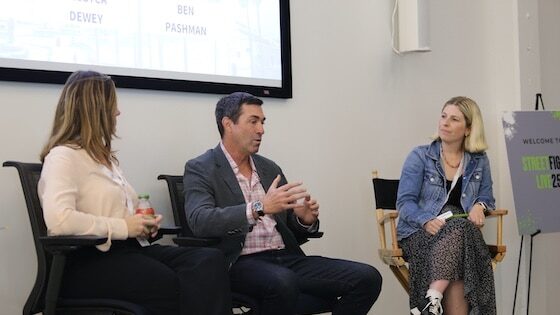Retail crossovers have been around for years. This includes things like getting your Starbucks inside Target. This is about fueling up while shopping – which can be seen elsewhere like IKEA’s famous meatballs – and drives more dollars to both businesses. The whole is greater than the sum of its parts.
Walmart has recently taken these longstanding principles to new levels by layering in discounts for its affiliates and QSR partners… the latest being Burger King. The collaboration grants Walmart+ members a robust 25 percent discount on all food ordered via the Walmart app at any Burger King locations.
That last part is a key distinction because it deviates from the narrower model referenced above – QSRs that reside physically within retail locations. To be clear, we’re instead talking about discounts for Walmart+ members at any Burger King location, as long as they order within the Walmart app.
That distinction aside, the drivers and dynamics are similar to traditional retailer/QSR collaborations – to elevate both businesses. Walmart incentivizes people towards its loyalty program in terms of sign-up and engagement (read: opening the app often), while Burger King gets Walmart-scale boosts in foot traffic.
Meaty Center
So what does this look like from the consumer/shopper perspective? A Walmart+ subscription costs $12.95 per-month or $98 per year (undercutting Amazon Prime’s $139 per-year). Features include free store delivery, discounts on gas, and exclusive access to affiliate deals… now including Burger King.
This makes the program a sort of mix between Amazon Prime and a Costco membership. Don’t forget, Walmart has experience in the dynamics and tactics of the latter, given its ownership of Sam’s Club. In fact, affiliate deals with partners have long been a selling point of big-box membership programs.
With Burger King, the collaboration carries some strategic alignment in terms of value-driven shoppers. In other words, the Venn diagram of Walmart shoppers and discount-seeking diners has a meaty center. Come get your housewares and cheap tee shirts while working up a hunger for nearby lunch discounts.
This is also aligned with the macroeconomic environment and other recent Burger King moves. The QSR giant has made a $300 million investment in redesigning about 1,100 U.S. locations and large portions of its menu. The latter includes a new $5 menu with mix & match options for its most popular items.
Behavioral Economics
Back to the idea of QSRs inside big-box stores, it taps into the experiential aspects of physical shopping. That in turn is one key differentiator against escalating threats from Amazon and its eCommerce ilk. Amazon keeps you coming back with low prices and convenience. Retail’s counterattack is experience.
More to the point of this article, another retail differentiator is incentives. This can assume several flavors – from discount programs to membership clubs like Walmart+. For the former, you get points and freebies based on purchase quantity over time. For the latter, you pay an annual fee to access discounts.
These are all ways of saying loyalty. The name of the game is incentives for customers to keep coming back. It also has a behavioral economics angle: Consumers view unredeemed loyalty achievements and membership fees as sunk costs that need to be redeemed… instead of turning to Amazon.
What’s the lesson for those in the SMB sector? Like many things, new tech deployments or strategies often start at the local big-brand level before trickling down-market to SMBs. All the above could be a model or a leading indicator for smaller retailers that wish to counter price competition from Amazon.
Header image credit: Yusuf Evli on Unsplash



